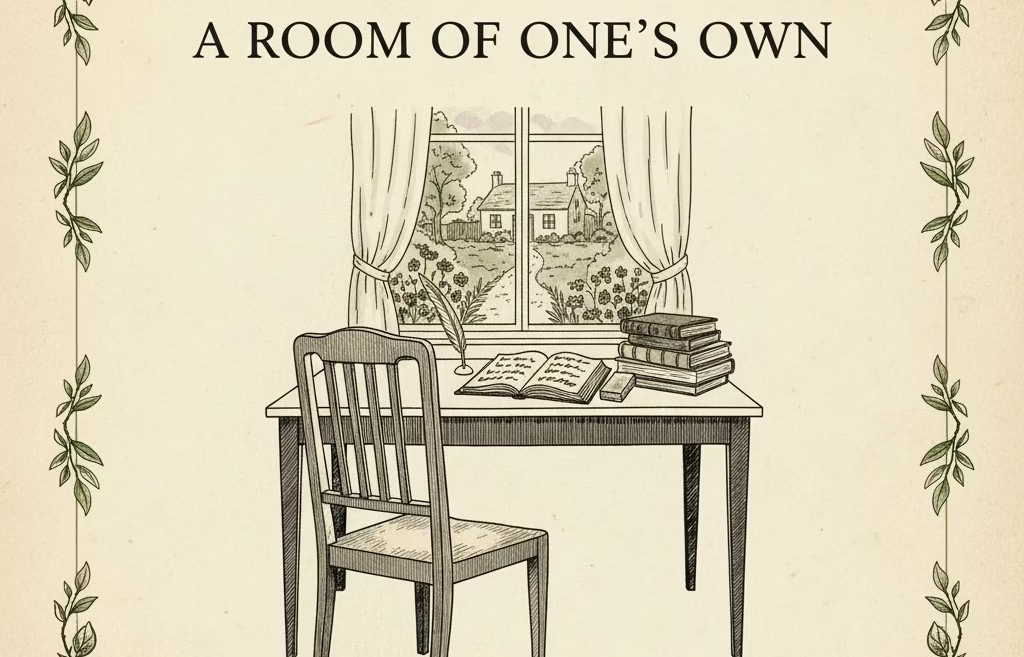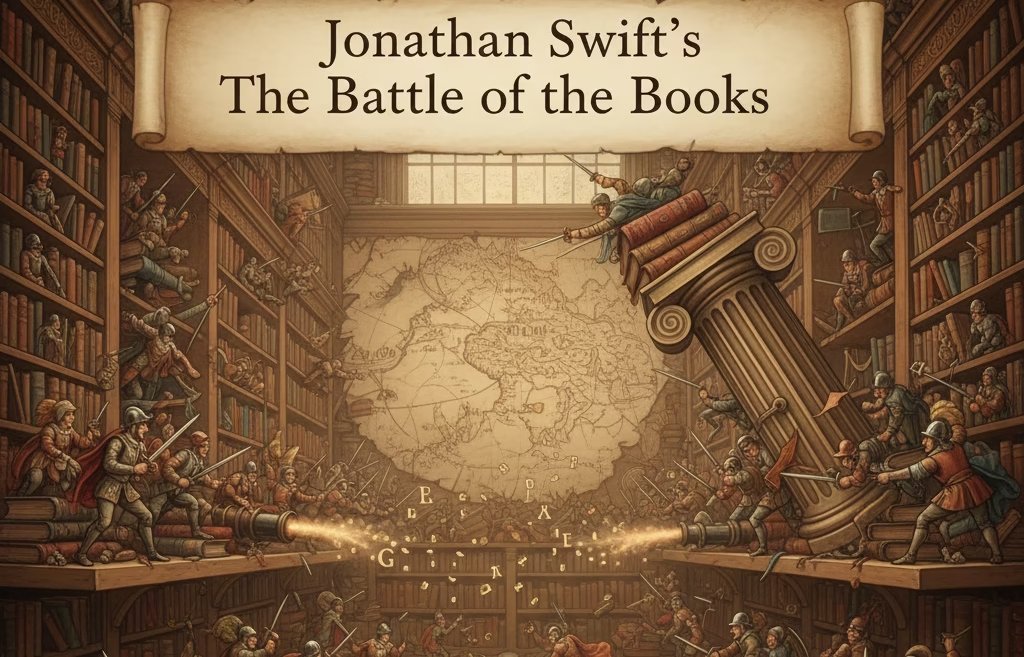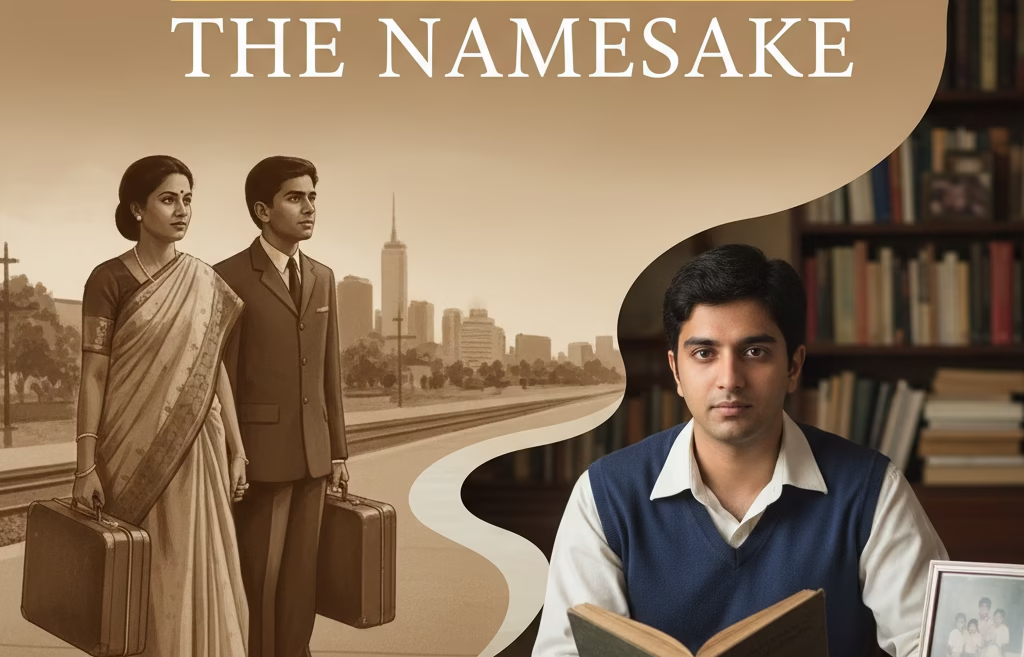Introduction
TS Eliot’s Murder in the Cathedral is a timeless poetic drama that explores the clash between spiritual conviction and political power. On the cold flagstones of Canterbury Cathedral, history and poetry collide. The murder of Archbishop Thomas Becket on December 29, 1170—brutally executed by four knights—was more than the end of a man; it was the birth of a legend, the creation of a saga that would echo far beyond its medieval context. Few events have reverberated so powerfully across centuries, and fewer still have been so artfully reimagined as in T.S. Eliot’s Murder in the Cathedral. This blog takes a deep dive into the analysis of murder in the cathedral, exploring the historical, psychological, and spiritual dimensions that keep Eliot’s drama alive in literary circles and modern consciousness.
TS Eliot’s Murder in the Cathedral: King vs. Archbishop
The Seeds of Conflict
Becket and Henry II—once trusted allies and friends—were sundered by a single, profound schism: the nature of power in a Christian kingdom. Becket rose from humble beginnings to serve as the king’s Chancellor, wielding secular power with expertise and a dash of extravagance. It was only after he donned the mantle of Archbishop of Canterbury that history took a sharp turn. The king, expecting obedience and continued consolidation of authority, instead faced an ascetic, fiercely principled churchman willing to defy temporal law for spiritual supremacy.
Power, Law, and Sovereignty
At the heart of their dispute lay the Constitutions of Clarendon, a legal battleground over the trial of “criminous clerks” and the autonomy of church courts. Henry’s demands were rooted in royal jurisdiction; Becket’s resistance arose from deep-seated loyalty to Rome and an uncompromising sense of ecclesiastical sovereignty. The collision was inevitable—and so was the tragedy that followed. Eliot’s play harnesses this epoch-defining conflict, using it as the scaffolding for a far more intricate meditation on faith and fatalism. FULL TEXT
The Architecture of a Soul: Becket’s Internal War
Temptation as Psychomachia
TS Eliot’s Murder in the Cathedral is not merely historical but psychological. The unyielding core of murder in the cathedral analysis is Becket’s own spiritual trial—the struggle between pride and humility, ambition and submission. Here, the Four Tempters emerge in Part I as personifications of both past and possible futures, each luring Becket toward a different escape from his martyr’s destiny.
| Tempter | Temptation | Becket’s Past | Biblical Parallel | Realization & Rejection |
|---|---|---|---|---|
| First | Safety, pleasure, reconciliation | Courtly, worldly | Bread from stones | Outgrown childish desires |
| Second | Chancellorship, secular power | Political ambition | Kingdoms of the world | Power is fleeting |
| Third | Treacherous alliance, rebellion | Intrigue, strategy | Political messiah | Betrayal is futile |
| Fourth | Glory, sainthood, eternal fame | Spiritual pride | Testing God in the temple | Wrong reason, greatest treason |
Becket’s journey through these temptations is harrowing. It’s the fourth and final lure—spiritual pride cloaked as martyrdom—that provokes his greatest self-examination. Eliot’s line “The last temptation is the greatest treason: / To do the right deed for the wrong reason” rings hauntingly true, echoing through academic discussions and personal reflection.
The Christmas Sermon: Surrender or Will?
In the play’s pivotal sermon, delivered on Christmas morning, Becket speaks not only to his congregation but to the ages. He reframes martyrdom as the “instrument of God’s will,” rejecting ego and ambition. Accurate submission replaces self-willed heroism. For audiences—myself included—this moment is transformative, inviting us to reconsider the nature of sacrifice and the slippery grip of pride.
“Martyrdom is never the design of man. It is always the design of God.”
— T.S. Eliot
Murder in the Cathedral: The Voices of Canterbury
The Chorus: Fearful Witnesses
Borrowed from Greek tragedy but infused with Christian anxiety, the Chorus of Canterbury women encapsulates the dread and vulnerability of ordinary folk. Their journey, from fearful longing for stability to awestruck recognition of spiritual truth, provides a vital through-line for audience engagement. “We do not wish anything to happen,” they plead; when history surges forward, they bear witness to its consequences, guiding readers through emotional landscapes both familiar and strange.
Priests: Faith vs. Pragmatism
The priests act as pragmatic counterpoints to Becket’s spiritual idealism. Their efforts to protect him—barring doors, seeking compromise—mirror the reasonable impulses within each of us. Becket’s refusal to hide, his insistence on facing fate, challenges comfortable assumptions about duty and divine order.
Knights: Modern Brutality
The aftermath of murder is where Eliot shocks his audience most. The knights, speaking in the bureaucratic prose of the twentieth century, suddenly break the formal verse with chilling rationality. Their defense of violence—cloaked in “necessity” and “order”—is unnerving, drawing a parallel between medieval brutality and modern political justifications. As someone who has watched bureaucratic language flatten ethical debate in academia and beyond, I found this scene to be one of Eliot’s most piercing indictments of rationalized cruelty.
TS Eliot’s Murder in the Cathedral: Deconstructing the Divine
Spiritual vs. Temporal Power
This isn’t simply a battle between Church and State—the play’s conflict pits eternity against impermanence. Kings rule by expediency; saints endure by submission to a higher Order. Eliot explores this clash with layers both historical and existential, inviting us to wrestle with the boundaries between law and conscience, power and principle.
The Anatomy of Martyrdom
Eliot strips the concept of martyrdom of romance, revealing its roots in utter humility, not egotism. True sacrifice, his play insists, is passive—an offering, not a grasp for glory. In many ways, Becket’s arc is a challenge to all who see suffering or leadership as justification for self-aggrandizement.
Symbolism of the Wheel
The motif of the wheel recurs throughout, representing fate, time, and the restless churn of history. Becket seeks the “still point at the center”—an allusion to Eliot’s later Four Quartets. For the Chorus and priests, the wheel means peril; for Becket, it is the image of acceptance.
TS Eliot’s Murder in the Cathedral: The Modernist Poetic Drama
Eliot’s use of verse drama was radical in the age of Ibsen and Shaw. His lyrics, prayers, and antiphonal chant weave Christian ritual with classical form, succeeding in expressing spiritual agony and ecstasy beyond plain speech. The shifting styles—from solemnity to bureaucratic banality—create a dynamic stage, one that echoes the thematic turbulence of the play itself.
As a literature professor, I find Eliot’s verse uniquely apt for expressing moments where the soul outpaces language. The blend of ancient and modern, ritual and realism, gives Murder in the Cathedral its unmistakable atmosphere. EXPLORE OTHER AUTHORS
Conclusion
More than a record of medieval politics or a treatise on spiritual will, T.S. Eliot’s Murder in the Cathedral survives as a living work precisely because it refuses easy answers. Eliot’s play forces every generation—and every individual—to reconsider the value of principle in a world bent on compromise. Whether you read it for its poetry, its psychological insight, or its enduring mystery, the echoes in the cathedral become, in the end, echoes within your conscience.
As I reflect on Becket’s fate from the vantage of modern academia, I am reminded that the most compelling analysis is always one that demands vulnerability and self-scrutiny. The “murder in the cathedral analysis” isn’t just about Becket or Eliot, but about us—our struggles with duty and desire, faith and fear, pride and humility.
FAQs
What is the central theme of TS Eliot’s Murder in the Cathedral?
Martyrdom and the tension between spiritual and temporal authority.
How does the play use the Chorus?
The Chorus transforms from passive spectators to spiritually awakened witnesses, reflecting audience anxieties and realizations.
Why did Eliot choose verse drama?
To convey spiritual and emotional depth unreachable by prose, blending ancient ritual with modern insight.
Is Becket’s martyrdom portrayed as heroic or flawed?
Both Eliot presents Becket’s sacrifice as a blend of humility and pride, forcing audiences to wrestle with the true nature of conviction.





